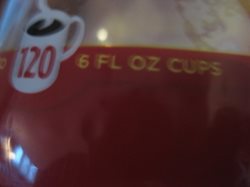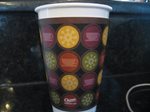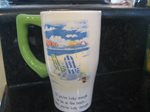
This weekend, my wife and I had been out running errands and at lunchtime we decided to stop at a fast food chain for a burger. After placing our order, the young girl at the counter asked us if we wanted the “medium” or “large” size. There was no mention of a “small” or “mini” size portion.

Upon arriving home, I decided to do some research on the subject of portion sizes. Over the years, there’s been a lot of talk, books, videos, diets, medications and Dr. Recommendations from various health professionals in regards to our eating habits and how “what we eat” affects our health. We know by now that it’s important to make healthy food choices but are we aware that we need to pay close attention to the “size” or “portion” we are eating as well. When we allow ourselves to consistently indulge in the larger portion sizes, we are adding calories and as a result tend to gain weight. This will happen more rapidly if we do not commit ourselves to a regimented exercise program.

Looking back as a young child, I remember going to restaurants my parents and ordering a “soda” which back then was just an 8 oz. bottle. There were no free refills on any drinks other than coffee and water. Today, our version of a normal serving size has been distorted by the large quantity offered at cheap food establishments and therefore we’ve forgotten what a typical meal is supposed to look like.
I went into our kitchen pantry and decided to read some labels. I found that the recommended coffee serving size

is 6 ounces. Many travel centers and restaurants don’t even offer a 6 ounce cup size. Typically, I notice the cup size starting at 12-16 ounces and can go well beyond those sizes.
Not paying close attention to portion sizes can add extra unwanted pounds and potentially contribute to health issues such as diabetes, high blood pressure and obesity.
Below, you can find some interesting information on the link from the National Heart, Lung, and Blood Institute’s (NHLBI)
Portion Distortion Quiz, which offers portion sizes from the past compared to what they are today.
Serving sizes have grown much
LARGER over the years as shown in the pictures below.



